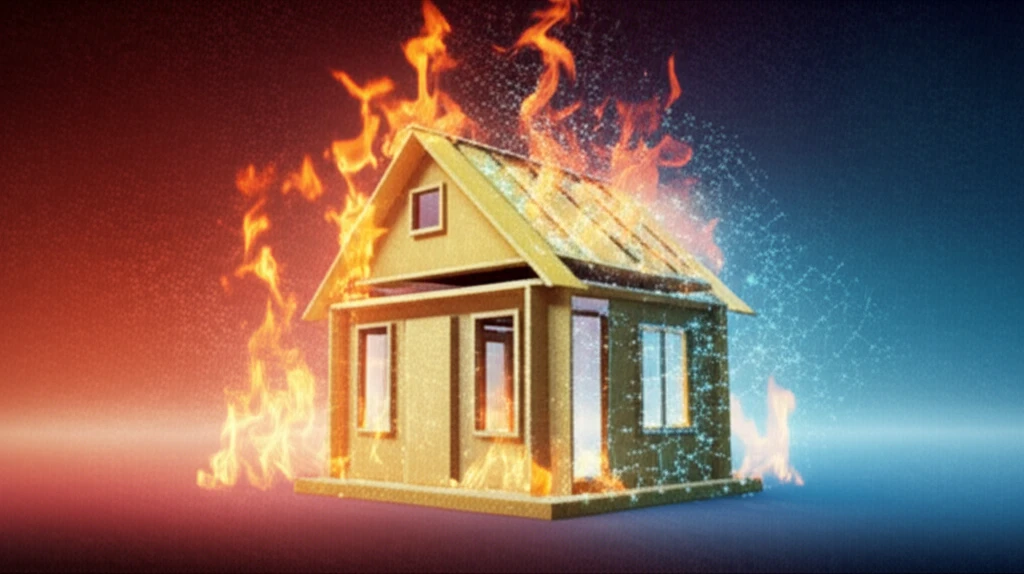
Can We Make Wood Unburnable? The Science of Fire-Resistant Fiberboard
"Explore how scientists are optimizing complex fire-retardant treatments to create ultra-low density fiberboard (ULDF) that dramatically reduces fire risks in homes and buildings, enhancing safety and potentially saving lives."
Wood-based composites are widely used in construction and furniture, but their inherent flammability poses significant risks. Traditional fire-retardant treatments often modify the burning process using chemicals to delay ignition, but finding the right balance of effectiveness and environmental impact remains a challenge.
Now, scientists are exploring innovative approaches to enhance fire resistance in wood products. Ultra-low density fiberboard (ULDF), known for its lightweight properties and applications in various industries, is being reimagined with advanced fire-retardant technologies. This article delves into the latest research on complex fire-retardant treatments designed to make ULDF safer and more reliable in fire-prone environments.
This article will explore how specific combinations of boron, nitrogen-phosphorus, silicon, and halogen compounds can be optimized to dramatically improve the fire resistance of ULDF. Discover how these treatments work synergistically to reduce the risk of fire spread, offering new possibilities for safer building materials.
The Chemistry of Fire Resistance: How Complex Treatments Work

The core of this innovation lies in the strategic use of multiple fire-retardant agents. Researchers have found that combining boron, nitrogen-phosphorus, silicon, and halogen compounds creates a powerful synergistic effect, far surpassing the capabilities of any single treatment. This approach involves carefully optimizing the composition of these agents to maximize fire resistance.
- Boron Compounds: Promote char formation, creating a protective layer that insulates the wood from heat.
- Nitrogen-Phosphorus Compounds: Increase dehydration reactions, reducing volatile gases that fuel the fire.
- Silicon Compounds: Form a heat-resistant inorganic film on the wood surface, blocking oxygen and slowing combustion.
- Halogen Compounds: Act in the vapor phase to interrupt the combustion process by scavenging free radicals, effectively suppressing the flame.
A Safer Future with Fire-Resistant Wood
The development of ULDF with complex fire-retardant treatments represents a significant step forward in fire safety. By optimizing the combination of boron, nitrogen-phosphorus, silicon, and halogen compounds, scientists are creating wood-based composites that offer enhanced protection against fire hazards.
These advancements not only improve the safety of homes and buildings but also open new possibilities for using wood in construction, where fire resistance is a critical concern. As research continues, we can expect even more innovative solutions that make our living spaces safer and more sustainable.
The synergistic effects of these compounds pave the way for future innovations in material science, promising a built environment where safety and sustainability go hand in hand. The development of fire-resistant ULDF highlights the potential of chemistry to solve real-world problems, making our homes and communities safer for everyone.
